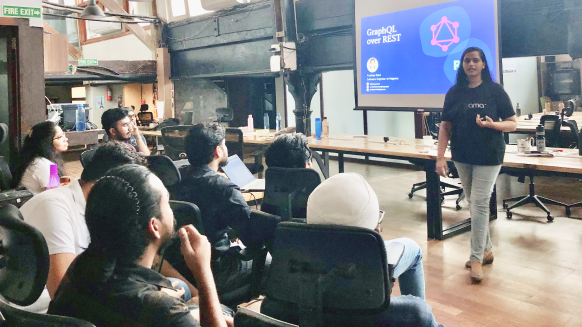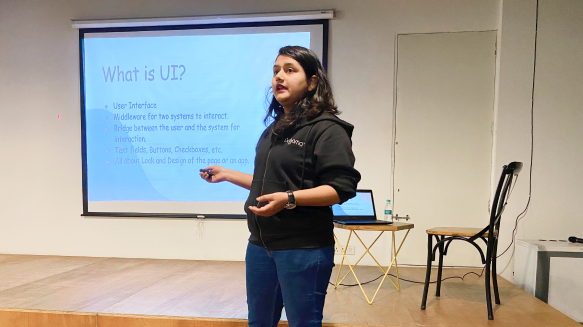The world is going Serverless & you should too–Here’s why.
When it comes to managing and running a high stake service, you need to be available for your customers 24X7. That means a sudden downtime in the middle of the night can have your entire DevOps team out of bed–trying to fix the issue. More often than not, a random spike in traffic is all it takes to bring your server down.
Cloud adoption has become an old story today. Businesses, small or big, are moving to the cloud, now more than ever, especially with the increased acceptance of remote work and distributed teams. Be that as it may, the unparalleled advantage of the cloud is probably a discussion for another day. For now, let’s fixate on the challenges that your business faces with the cloud–unplanned downtime due to excessive load on the server being one of them.
You can dismiss this as a planning issue–which can be taken care of by acquiring a larger share on the cloud. However, is that the best option? Arranging for a much larger load than your average present requirement in anticipation of a spike that may or may not happen, hardly sounds like an optimum choice.
IT is traditionally besmirched for unused space, underutilized compute, limitless levels of virtual systems–that result in increased spending and decreased security. Extra space on the server adds to this wastage and you end up in a cloud sprawl–paying for a capacity you may never need.
That’s where Serverless Architecture comes into the picture–so that you can scale as and when the need arises without worrying about downtime.
Understanding Serverless
To start with, the nomenclature Serverless can be misleading. When you move your IT infrastructure to a serverless architecture, your business is not really running without servers. Rather, the only difference is that the servers your business operates on are owned, managed, and maintained by a third party–one with the expertise to manage the cloud on a large scale.
Loosely translated–serverless means that your vendor takes care of your backend servers–from keeping them up and running, and scaling up and down as per the system’s requirement. Not just that, it is the vendor who takes charge of keeping your data and systems secure on the server. All in all, dealing with servers is something totally off your plate and onto theirs so that you can focus on growing and operating your business.
Why Serverless
If building, managing, and maintaining servers is not your core offering, going for Serverless can be more advantageous than you think. Here’s why:
You don’t need to worry about DevOps
When cloud service providers of serverless architecture, operations, maintenance, and security is their concern. Given that they’re the specialists in the field, handing over the onus to them not only takes the burden and cost of DevOps off your plate but also ensures that it is done in the most efficient manner. The result–your customers face negligible availability issues and server errors.
Capacity Planning is no longer your concern
Should you be prepared for 30 million users on day one or 300? When you’re in the process of launching and figuring out what your target audience may or may not like–there’s a lot of uncertainty. Capacity planning then becomes a nightmare. You’re busy writing code and building a system compatible with 100 million users where in fact your offering isn’t being liked by even a thousand. So, instead of finding solutions to problems that don’t even exist, you can focus on finding what your customers really want and leave managing the capacity to your serverless service provider. You can focus on releasing the product–whether it draws 50 users or 50 million of them, your server would scale automatically to accommodate them all.
Finding your Product-Market Fit happens faster
Once the operational overhead is out of the picture, your team can focus entirely on product development, release rapidly, get customer feedback and use that to iterate quickly. That way, you are able to figure out what works and what doesn’t– and are able to find your Product-Market fit faster.
We understand the skepticism
While we can keep going on about the merits of serverless, addressing your concerns and apprehensions is equally important. To start with, we understand that serverless is a new technology, and finding people that have familiarity working with serverless architecture may be a challenge. For that, you can always seek assistance from an industry expert (like Udgama) that can help you bridge the gap and move to serverless faster and in an orderly manner.
Secondly, you must understand that like with pretty much every business change, you will face some inertia in the beginning–getting out of one’s comfort zone is not easy. That goes for your developers too. Having said that, it is only after you leave the comfort zone that you enter the ‘growth zone’.
Lastly, for some, the cost may be a limiting factor in making the switching or for choosing serverless. However, if you measure the cost saved by moving to serverless, you may not have this concern. Let us do the math for you.
The Cost of Not Choosing Serverless
If you thinking going for a serverless service provider is costly, let’s talk about the costs that you incur by not going for one and managing in-house servers:
DevOps Cost
Quite evidently, if you are going to maintain in-house servers, you’d need a team of experts that ensure your systems are up and running round the clock. That means you not only have to bear the cost of acquiring the right DevOps talent for your business but also that of retaining them.
Training Cost
It’s quite likely that your team would need upskilling to match the system’s requirements as you scale up. Rewriting and reinventing your code to scale up doesn’t happen in a day and requires a learning curve.
Market Opportunity Cost
Every day your product’s release is delayed, you lose out on a part of the market share that you could have tapped on had you been able to iterate and release faster. The cost of lost opportunity is an indirect cost that you bear by keeping everything in-house.
Customer Churn Cost
Every time your service is unavailable, or your team battles a downtime or server issue–you lose out on customers or compromise their satisfaction. This later translates into a higher customer churn adding the financial burden of the revenue lost and the cost of acquiring a new customer on your business.
Let Serverless Be The Norm
Now that your apprehensions are taken care of and that you have a cost-benefit analysis, we hope that you’re more convinced to go for serverless. At Udgama, we have made serverless the norm. We choose to build serverless applications as long as they’re not causing any functionality limitations in what we aim to provide. As a matter of fact, we are yet to come across of scenario where they’ve proven limiting for our development needs.
Overall, serverless is the competitive advantage you need in today’s fast-paced world to grow, adapt and evolve faster and be relevant to your target audience at all times. In case you need help in making the move, we’re always around.








